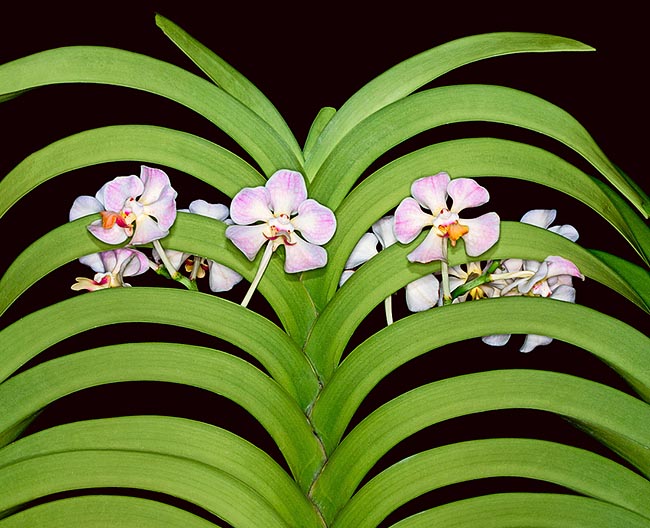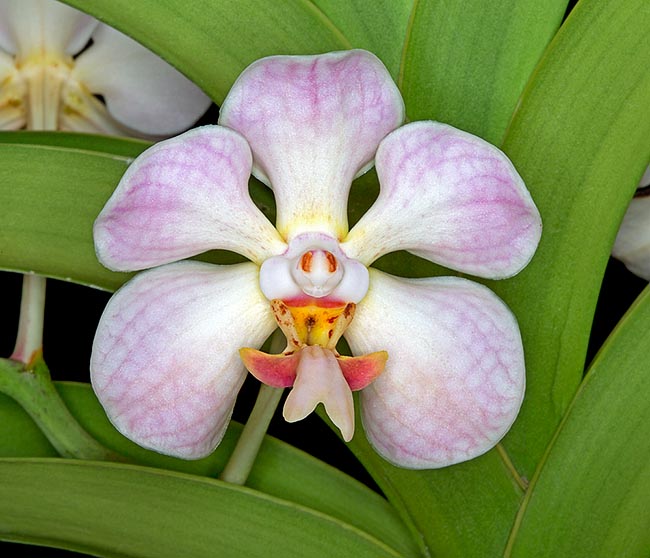Family : Orchidaceae

Text © Pietro Puccio

English translation by Mario Beltramini

Much decorative, Vanda foetida is an even 1 m tall epiphyte native to Sumatra © Giuseppe Mazza
The name of the genus is that in Sanskrit of the Vanda tessellata; the name of the species is the Latin adjective “foetidus, a, um” = fetid, stinking, with reference to the smell of creosote emitted by the flowers.
Common names : bộ sưu tập phong lan (Vietnamese).
The Vanda foetida J.J.Sm. (1906) is a monopodial epiphytic species with erect stem, up to 0,88-1 m tall and of 1,2 cm of diametre, entirely covered by the imbricate foliar bases, from which depart robust fleshy aerial roots.
The leaves are alternate, distichous, coriaceous, nastriform with irregularly tridented apex, curved, 25-35 cm long and 2,5-3,5 cm broad, of grey-green colour, glossy.
Axillary racemose inflorescences, on an about 8 cm long peduncle, carrying 2-3 fleshy flowers of about 4,5-5,5 cm of diametre with sepals and petals similar, spread, spatulate-orbicular, of more or less intense lilac pink colour. Dorsal sepal about 2,8 cm long and 2,5 cm broad, lateral sepals of the same length and 3 cm broad, petals about 2,7 cm long and broad, trilobed fleshy labellum, 2,7 cm long with erect lateral lobes and pandurate (violin-shaped) median lobe, 1,5 cm broad. It reproduces by seed, in vitro, and micropropagation.

Inflorescences with 2-3 flowers of about 5 cm of diametre with unpleasant smell as the scientific name suggests © Giuseppe Mazza
Daily abundant waterings and nebuli- zation of the roots in summer, in particular for the plants with bare root, but without stagnations, more spaced in winter, using rainwater, demineralized or by reverse osmosis at ambient temperature.
Biweekly fertilizations from late spring to early autumn, then monthly, utilizing a balanced product, with microelements, specific for orchids, at ½ - ¼ of the dosage suggested on the package.
It can be mounted on branches, bark, rafts of cork or of arborescent ferns or cultivated in pots provided of excellent draining, with compost that can be formed by medium-large sliced bark fragments and charcoal, or preferably in baskets, in order to allow the roots to freely grow, even without any substratum. The repottings are to be done when strictly necessary, due to the delicacy of the roots, by the time of the vegetative restart.
The species is shown in the appendix II of the CITES (species whose trade is internationally ruled).
→ For general notions about ORCHIDACEAE please click here.
